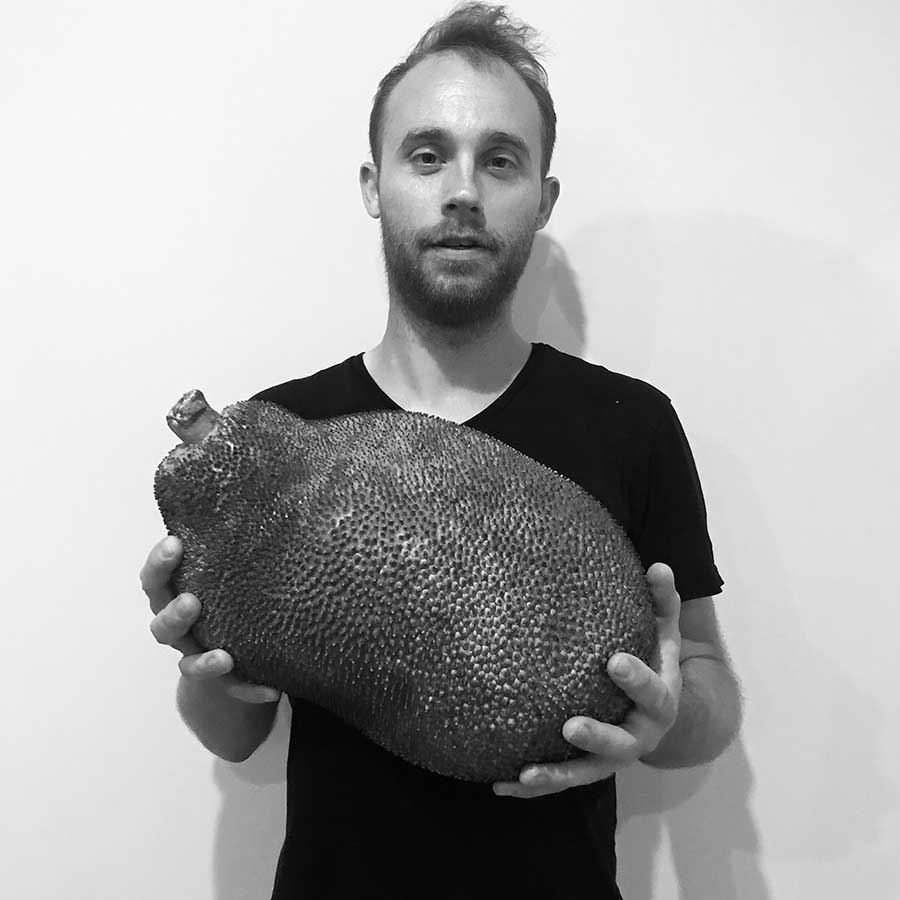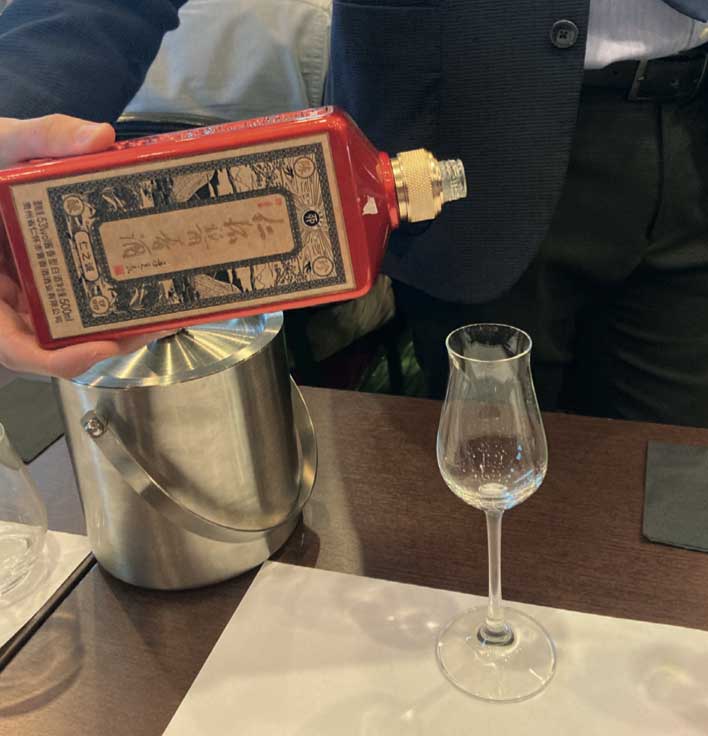How did your passion for chemistry begin?
My passion for chemistry began after reading the UC Davis text, Technology of Winemaking, eighteen years ago, when I was mainly interested in vermouth. I soon became interested in the production of spirits, but it wasn’t until I discovered the work of Rafael Arroyo that I became interested in rum.
What is the definition of a high ester?
High esters are simply ester-rich rums and may represent a niche subset of the wider ‘big flavour’ category, a term on which there is no solid consensus. These rums did not have a consumer typology until very recently, so it is not clear what they are or are not, other than a heavy, aromatic rum.
Some are extremely good and consumed as such, while others are too concentrated to drink straight. But it can be fun to mix them yourself. Connoisseurs are somehow surprising producers with their interest in high esters, and the industry doesn’t always know how to react when it comes to information.
One obvious aspect of the definition of a high ester is that the category is named after a class of congeners, but their full appreciation and value may depend on another class of mysterious congeners that has been the subject of over a century of research, but which has eluded any attempt to produce them on demand or even to identify them.
These congeners are probably rose ketones, and perfumers claim that they are the most theoretically beautiful scents around which your immune system hinges in a state of rest. They also add radiance, making esters more beautiful, which is no mean feat. Their threshold of perception is wild, and they can allow well-endowed rums to stretch in a blend to extreme degrees.
And grand arôme ?
The term ‘grand arôme’ seems a clever alternative to the term ‘high ester’, as it distances itself from the reliance on esters and has also been used historically to refer to Jamaican and Martinique rums. Grand arôme is a PGI of the Martinique AOC, but the Savanna distillery on Reunion Island has also used it recently.
Jamaica has produced rums classified as ‘plummers’ or ‘wedderburns’, which imply intermediate levels of ester, and which also merit a trade term such as ‘grand arôme’. Many of them are far more extraordinary than some of the rums described as ‘high ester’. What’s happening is that this whole category is being re-exposed and redefined by the current generation.
The most important underlying characteristics of this category are that a fission yeast is generally dominant over a budding yeast, but this is not immutable. The ferments also have production ‘complications’, such as the use of butyric bacteria or auxiliary mildew yeasts, which clearly influence the aroma.
On the one hand, it would be good to have a universal marketing term to help consumers, and on the other, it needs to be structured in such a way as not to hinder innovation.
When and where were rums with a high ester content first mentioned?
The number of esters only became significant at the end of the 19th century, when public laboratories began to carry out analyses and excise pressures created a demand for rums with a high alcohol content.
However, even before this, it was well known that Jamaican rums made a lot more money than other rums such as Demerara, and many people sought to find out why. There are many historical comments about the importance of scum or the use of a mud vat or dirty tank to increase the flavour.
In the late 19th century, the term ‘Old Jamaica’ was used to refer to old styles of rum that were extraordinary, but whose viability was precarious. General trade names such as Wedderburn, used in the 20th century, are reminiscent of Old Jamaica.
How many terms encompass this idea of high ester/big aroma?
High ester rum, grand aroma, continental or flavoured rum, plummer, wedderburn, heavy rum. In the mid-twentieth century, the Seagram team at Long Pond even called some of its many brands “super-wedderburns”.
Some rums are named by their mark, which tells the buyer everything they need to know. Rum production and consumption spans many languages, so it wouldn’t be inappropriate to retain overlapping terms or even invent new ones for our generation, now that these rums are available in new forms.
What is important to know is that there is more information available at the level of specific brands, so that terms can be attached that allow the particularities of the production to be appreciated. Many of these rums will increase in value when connoisseurs can make comparisons between the different categories.
Are there other spirits with a high ester content (Batavia arrack, baijiu, etc.)?
Batavia Arrack is undoubtedly one of the grand arômeed rums and has been noted for its fission yeast, but it is not really rich in esters. Baijiu is fascinating because it’s often esterified, but doesn’t have the brilliance of rum.
Baiju is known for its open growing conditions, which create many parallels with rum, and it’s also worth noting that baiju producers do more academic research to improve their products than any other spirits category. Their research focuses in particular on rose ketones, such as damascenone, which are thought to enhance the brilliance of rum.
What are the chemical compounds/aromatic family covered by the High Ester family?
For the most part, high ester rums have the same aromatic compounds as other spirits, but they differ in terms of amplitude. High ester rums containing cane vinegar can have dizzying levels of ethyl acetate, several times higher than an aged bourbon, which can make them unfit for direct consumption without blending.
Fission yeast ferments contain much less fusel oil than budding yeasts, which is interesting because many valuable aromas are less volatile than fusel oil, so their fate is often tied up during distillation.
The finest rums are known to have several multiples of damascenone compared to other categories of spirits such as single malt scotch or cognac, and this is one of the sources of their brilliance. Sugar cane, as a substrate, has the potential for a large number of very high-value aromas which some ferments release while others simply flush them down the drain.
In addition to beta-damascenone, other pink ketone isomers have been observed in rum that are extremely difficult to identify with certainty and often require university-level forms of analysis, but which are easy to appreciate in the glass because of their remarkable persistence.
How would you classify rums with a high ester content? By ester level, flavour profile, origin, fermentation style, yeast family or distillation process?
Sub-classification is a marketing tool that helps producers differentiate themselves from a vast sea of inoffensive, light, basic or even adulterated products sharing the same general category: rum.
Connoisseurs have been complaining since the 19th century that there is a small quantity of truly radiant rum and a vast sea of so-called “quality” rums all sharing the same name. Any classification also helps consumers to make decisions.
At first we distinguish between fine rum and ordinary rum, but after a while we help consumers make a decision about whether to buy an extremely fine rum or a single malt scotch. Disclosing ester levels is not helpful and they can be manipulated or misinterpreted.
Flavour profiles are difficult to use when we cannot easily name or measure our most precious congeners. Origins are important to make a rum culturally available, but are not enough to protect consumers from manipulated commodities made in the same region.
Yeast specificities, followed by distinct production complications, are the best way to convey the uniqueness of rums to consumers and to support the valuations that producers need to ensure the viability of the most extraordinary rums.
Who produces high ester rum?
Jamaica produces many pot-distilled fission yeast rums with distinct fermentation/production complications. Barbados probably didn’t have one in the 20th century, but both Foursquare and WIRD explore fission yeast and production complications.
Seawater is an interesting production complication, but not enough is known about how WIRD used it historically. Guyana probably never explored fission yeast until the late 20th century, when it began experimenting on a small scale with high ester rums as blending stocks, using spontaneous fermentation and complications such as cane vinegar, and so-called “succulent fruits”.
At some point, Arroyo’s influence led Guyana to think about its own production and isolate its own ‘Diamond’ budding yeast. Demera challenges many of the typical distinctions of grand arôme, as its house yeast is not a fission yeast, its pot still rums are heavy, but not exactly high ester, and its most distinct production complications are its heritage stills.
After the eruption of Mount Pelée in 1902, Martinique was left with only L. M., Grand-Fonds-Galion and Bassignac as great-flavoured rums, as Kervegant noted. In 1933, it was already thought that their character was lighter than before the eruption, and all that survives today is Galion. La Réunion is offering a great new Savanna flavour based on extensive research carried out over the last few decades. This research has focused on both esters and the rose ketone aroma.
Batavia arrack is not rich in esters, but it has always been fermented with fission yeast (and probably still is today), which leads to significant production complications. It is known for its pungent aroma and very high historical value. New Zealand may be in the process of making a new full-flavoured rum using a fission yeast combined with a locally isolated flavour-producing mildew yeast.
Grenada may not be exploring fission yeast or ester levels, but the Renegade distillery is introducing a new complication to production by carefully isolating plots and varieties of sugar cane to prove the existence of a global terroir for the island.
Are producers increasingly interested in high ester content? Are there new techniques/materials to explore?
Producers aren’t really embracing heavy rum because these difficult-to-make products aren’t as profitable as basic rum, which sells well. Fine rum complications also face resource constraints, so they require a lot of planning and can’t be scaled up as easily as base rum. Many producers have also been bought out by conglomerates with a cash-cow culture that places no value on research or product development, despite employing incredibly skilled in-house talent.
Much of the rum most prized by connoisseurs, dating back over a century, has suffered precarious viability. There are many ways to reduce the risk and profitability of grand arômeed rum, as Rafael Arroyo has demonstrated, but at present no producer is even capable of executing Arroyo’s patented process for heavy rum.
No established producer has ever marketed a rum containing mildew yeast, even though experimental production proves that such yeasts are worth having. Many grand arôme concepts remain to be explored. International catalogues contain multiple fission yeasts isolated from the rum industry over a century ago, which no commercial producer uses.
Some sugar cane growers report the appearance of pineapple disease-like phenomena in their sugar cane plots, but there is no information to suggest that any producer has made even experimental rum from them.
This flavour-producing infection was historically associated with the “rum canes” that enhanced the flavour in rum production. The fact that many islands are beginning to tackle the complicated task of increasing sugar cane plantations rather than relying on imported molasses is a sign that the tide is turning. Adding fresh cane juice to molasses could be the easiest way to improve the flavour and quality of all categories of rum.
Read also : [Focus style] In the secret of grand arôme and high esters rums



